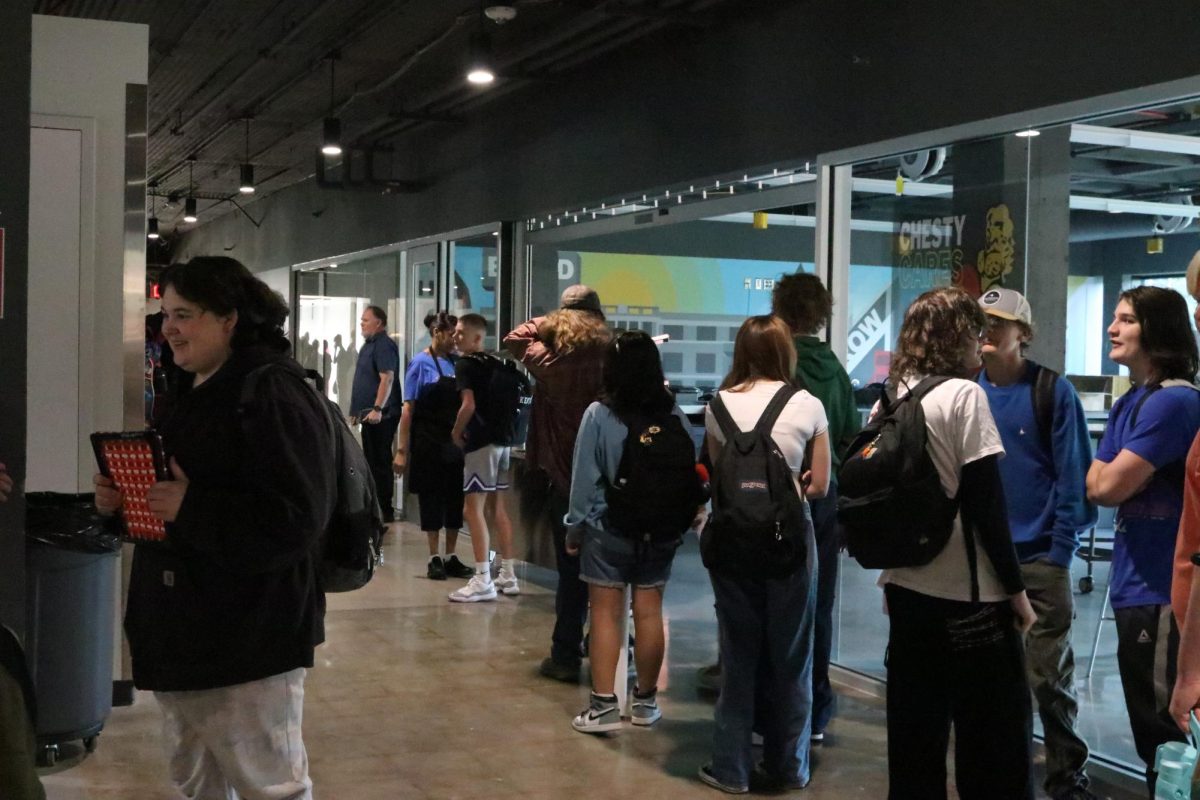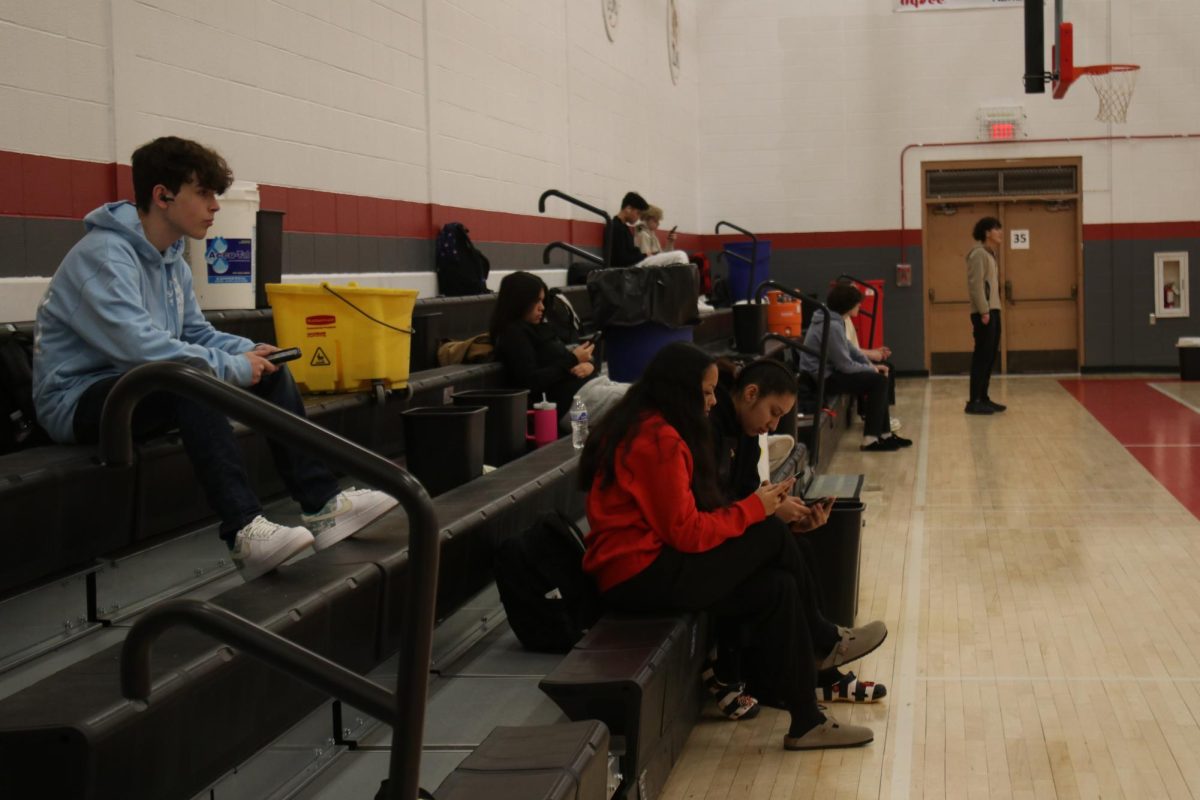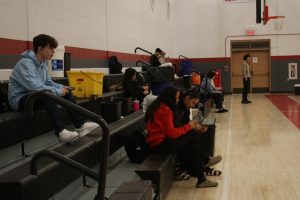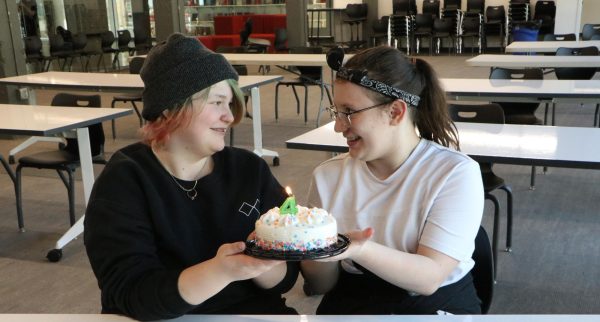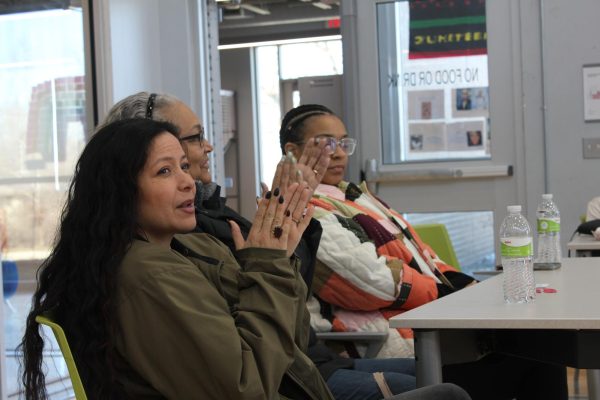District tries to connect students with devices
School looks to accommodate new needs for technology at home
September 29, 2015
The struggle of lugging heavy textbooks from school to home is one all students know. USD 497 has tried to lighten students’ load by trading print textbooks for online alternatives.
While the switch gives students one less thing to bring home, it leaves those who don’t have access to a device with a big problem.
In a survey by The Budget, nearly 16 percent of students said they don’t have a device (other than a cell phone) they can use to view online books from home. Of those, 25 percent said they weren’t able to keep up with classes that rely on technology.
Although senior Summer Powers said she doesn’t mind using online text, she does not have a device to access it with, which can make completing assignments a struggle.
“When I have to do essays, I have to type it up on my phone,” she said. “ I feel like I could do it a lot quicker if I did have a laptop.”
For students who can’t use the online text or do assignments online, print texts and alternative work times are provided by many teachers.
“I make it clear to them that anything that they can not get on to at home they can either come and work with me before or after school or I will find a way for them to access it,” English teacher Kelsey Buek said. “Whether that be me printing out or typing up a worksheet.”
Even with these accommodations, some students feel they are at a disadvantage because of lack of online access.
“I’m in a blended studies class right now and I like working online, but I don’t really do that at home,” Powers said. “I do [homework] from books, [but] it’s nice not having to carry a lot of books.”
To make online learning accessible for all students the district is working on a system to check out devices to students without their own.
“We understand the need to ensure our students can access the internet or have a device at home,”Kemble said. “With this in mind, we are piloting a program that will allow students to check out a hot spot and a device to use at home.”
The portable WiFi hotspots along with devices will be available for checkout through schools. They will provide an internet connection that complies with district web policies for students who do not have a connection at home.
Online textbooks not only lighten backpacks but also provide more interactive and current information, Kemble said.
“Digital textbooks are dynamic,” she said. “They can be updated with new information in near-real time… giving students the latest, up-to-date information on the topic they are studying.”
Some students and teachers have complained that textbook resources are running short this year during the transition. Yet other students have responded positively to the online materials.
“I think [online textbooks] are good, my AP kids love them,” chemistry teacher Karen Curry said. “They don’t have a regular textbook. It’s AP, so it’s really heavy, and the students appreciate not having to carry that around.”
Not everyone, however, is as enthusiastic about the switch.
“Since the online textbooks are relatively new, we get mixed responses,” Kemble said. “Many people see the value of these robust and responsive textbooks, and yet others are more comfortable with a traditional textbook. I imagine it is much like it was when any other form of technology was created. It takes time for people to get comfortable and understand the potential of the new technology.”






